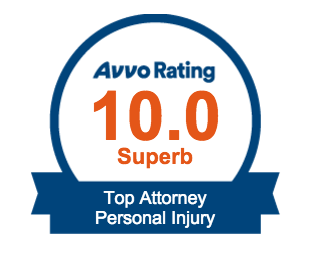Call For A Free Consultation
415-897-4801
Novato Corporate Office (Mailing Address):
10 Commercial Blvd #206 Novato, CA 94949
Offices Located In San Francisco, Oakland, San Jose, Walnut Creek, Pleasanton, Santa Rosa, Napa, Redwood City, Sacramento and Newark
Premises Liability: Accidents in Gyms and Fitness Centers
Going to the gym is supposed to improve your health and wellbeing. But all too often, accidents and injuries occur in fitness centers and gyms that end up causing serious harm. Slip and fall accidents, injuries from defective exercise equipment, inadequate supervision leading to injuries – these kinds of incidents happen frequently at gyms and can leave victims with major medical bills, lost income, and other significant damages.
Under premises liability laws in California, gyms and fitness centers have a legal duty to keep their facilities reasonably safe for members and guests. When gym owners fail to meet this responsibility and their negligence results in preventable accidents that injure people, they can be held financially liable. Victims have the right to take legal action and recover compensation for their losses.
This article provides an overview of the duties gyms owe their patrons, the common accident claims against fitness centers, how to prove negligence, the statute of limitations for filing a lawsuit, and why it’s important to consult a qualified lawyer if you have been injured at the gym.
Duty of Care Owed by Gyms
Like all property owners in California, gyms and fitness centers have a duty to use reasonable care to keep the premises safe. This includes inspecting equipment, setting rules for safe use of facilities, proper maintenance, and warning about known hazards. If a dangerous condition exists that the gym should have been aware of and failed to fix or warn about, they can be considered negligent.
Some specific duties owed include:
- Maintaining exercise equipment and machines properly, including inspection and repairs
- Enforcing rules and policies meant to protect safety
- Regular cleaning to avoid slip and fall accidents
- Proper design of exercise areas to avoid overcrowding
- Warning users about risks they may not be aware of
- Providing adequate supervision and staffing levels
- Promptly addressing potential dangers or hazards
- Regular safety training for employees
A gym is expected to meet the standard of care of a reasonable fitness center. If an injury occurs because they failed to take adequate precautions, they can be liable for any resulting damages.
Common Gym Accident Claims
Premises liability lawsuits filed against gyms often involve customer injuries from:
Defective Exercise Equipment
Faulty fitness machines are one of the top causes of injury at gyms. Parts can break or give way, weights can detach, and design flaws can cause users harm. Gym owners must ensure proper inspection, maintenance, and repair of all exercise equipment. Failing to do so resulting in injury constitutes negligence.
Slip and Fall Accidents
Floors around pool areas, locker rooms, and smooth studio floors can become very slippery. Tripping hazards like towels, mats, and cords may also cause falls. Gyms must regularly clean, install slip-resistant surfaces, fix raised edges, and eliminate tripping dangers to avoid liability.
Inadequate Supervision
Lack of supervision is one of the leading causes of gym injuries. Gyms must provide adequate staffing to monitor exercise areas, enforce safety rules, and prevent accidents. If an injury occurs due to insufficient supervision, the gym may be legally responsible.
Overcrowding
Letting too many members use a space at once increases risks of collisions and contact injuries. Gyms must design facilities to allow safe traffic flow and limit overcrowding during peak usage times. Inadequate space and poor room design can constitute negligence.
Diving Accidents
Serious injuries like spinal cord damage and brain trauma can occur from diving into pools. Gyms with pools must install appropriate “no diving” signage and depth markers, ensure adequate lighting, prohibit unsafe diving, and take other measures to avoid these accidents in their facilities.
Lack of Maintenance
Poorly maintained locker rooms and bathrooms can lead to falls due to wet floors, broken tiles, damaged plumbing, etc. Failure to promptly fix these dangers makes the gym liable if any customers are injured as a result.
Injuries During Classes
Insufficient instruction, overexertion, and inadequate assistance during classes can result in strains, sprains, fractures, and other harm. Gyms must ensure trainers are properly certified and classes are supervised appropriately.
Kids Getting Hurt
Children using gyms can get injured if not properly supervised. Gyms must take extra care to protect minors and prevent accidents in youth areas.
Proving Negligence of the Gym
To successfully win damages in a premises liability claim against a gym or fitness center, an injured person must prove:
- The gym owed a duty of care to maintain safe premises
- The gym breached this duty through negligence. This can be through unsafe conditions like a wet floor, faulty equipment, overcrowding, lack of supervision, etc.
- The person suffered actual injury or damages
- The gym’s negligence directly caused the injury
Witness testimony, medical records, bills, photographs of hazards, equipment inspection records, video footage, and other evidence can help demonstrate the gym’s liability. Expert witness testimony may also be used to establish facility safety standards.
With an experienced personal injury attorney’s assistance, victims injured due to unsafe conditions at a gym can recover compensation for both economic and non-economic damages. This includes medical bills, lost wages, pain and suffering, loss of enjoyment of life, and other hardships resulting from the accident.
Statute of Limitations for Filing a Gym Injury Lawsuit
California law strictly limits the timeframe to file a personal injury claim against a gym operator to two years from the date of the injury. It is crucial to act fast and contact an attorney right away to avoid exceeding this statute of limitations and having a case dismissed. Proper evidence must be preserved, and an in-depth investigation of the incident should begin immediately.
Speak to a Premises Liability Lawyer for Help with Your Case
If you or a loved one suffered an injury in a gym due to unsafe conditions, machine defects, lack of supervision, or other negligence, contact our firm for a free consultation. We have successfully handled premises liability claims against gyms and other property owners in California for years. Our experienced attorneys will thoroughly examine your case and help you recover the maximum compensation you deserve.
Visit one of our offices at:
- 10 Commercial Blvd, #206 Novato, CA 94949
- 75 Broadway #202, San Francisco, CA 94111
- 3558 Round Barn Blvd, Suite 200, Santa Rosa, CA 95403
Or call us for a free consultation on (415) 897-4801.
Want A Free Consultation?
© 2025 Rush Injury Law. All Rights Reserved.














